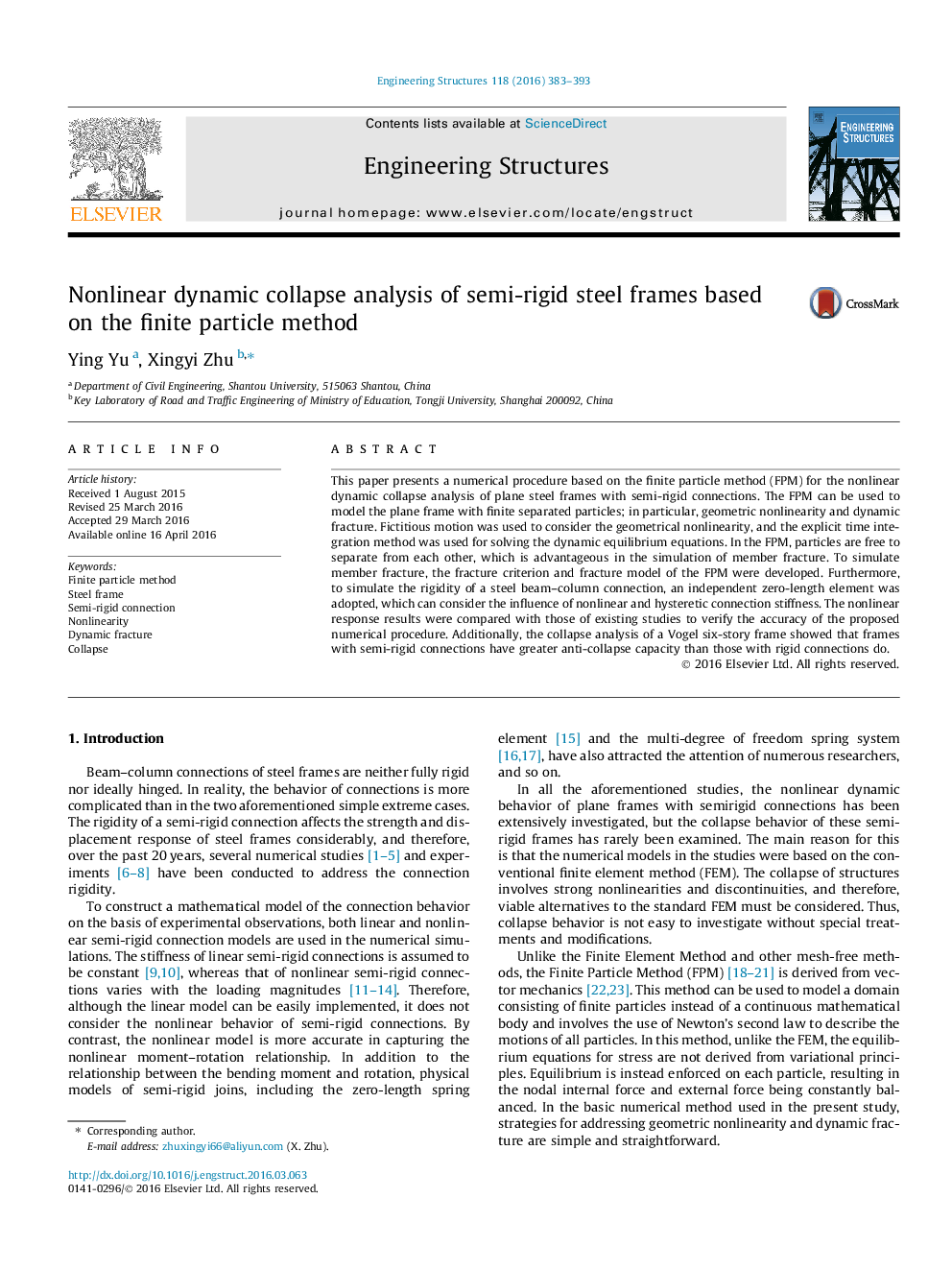| Article ID | Journal | Published Year | Pages | File Type |
|---|---|---|---|---|
| 265746 | Engineering Structures | 2016 | 11 Pages |
•Based on the Finite Particle Method (FPM), an independent zero-length element with nonlinear and hysteretic connection stiffness was adopted to simulate the rigidity of steel beam–column connection.•Fictitious motion procedures were developed to handle the geometric nonlinearity without iterative correction.•To simulate member fracture, the fracture criterion and fracture model were developed.•The collapse analysis of a Vogel six-story frame shows that a frame with semi-rigid connections has more anti-collapse capacity than that with rigid connections does.
This paper presents a numerical procedure based on the finite particle method (FPM) for the nonlinear dynamic collapse analysis of plane steel frames with semi-rigid connections. The FPM can be used to model the plane frame with finite separated particles; in particular, geometric nonlinearity and dynamic fracture. Fictitious motion was used to consider the geometrical nonlinearity, and the explicit time integration method was used for solving the dynamic equilibrium equations. In the FPM, particles are free to separate from each other, which is advantageous in the simulation of member fracture. To simulate member fracture, the fracture criterion and fracture model of the FPM were developed. Furthermore, to simulate the rigidity of a steel beam–column connection, an independent zero-length element was adopted, which can consider the influence of nonlinear and hysteretic connection stiffness. The nonlinear response results were compared with those of existing studies to verify the accuracy of the proposed numerical procedure. Additionally, the collapse analysis of a Vogel six-story frame showed that frames with semi-rigid connections have greater anti-collapse capacity than those with rigid connections do.
